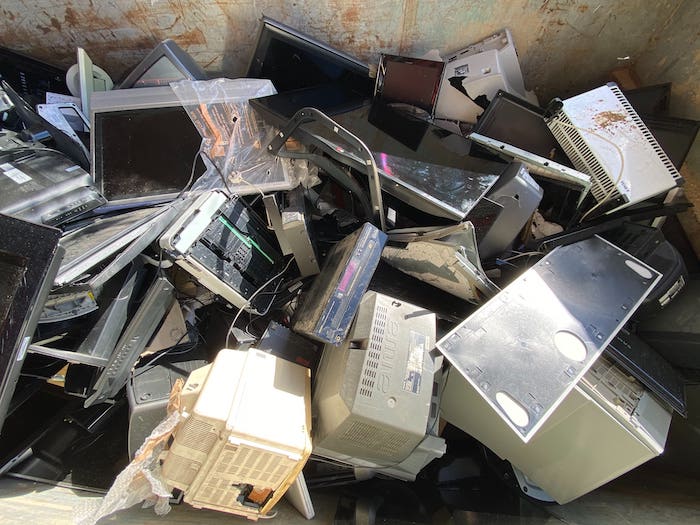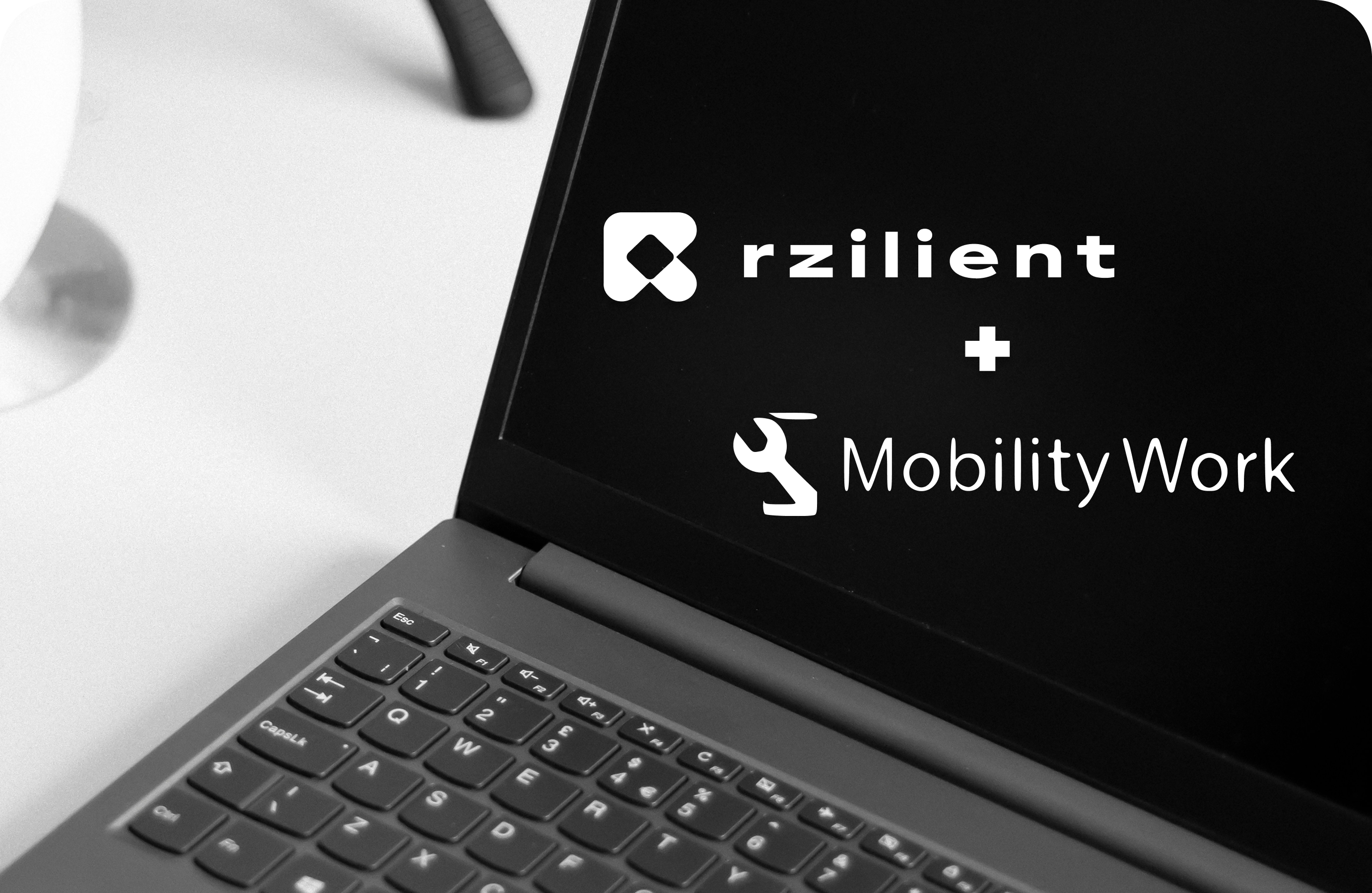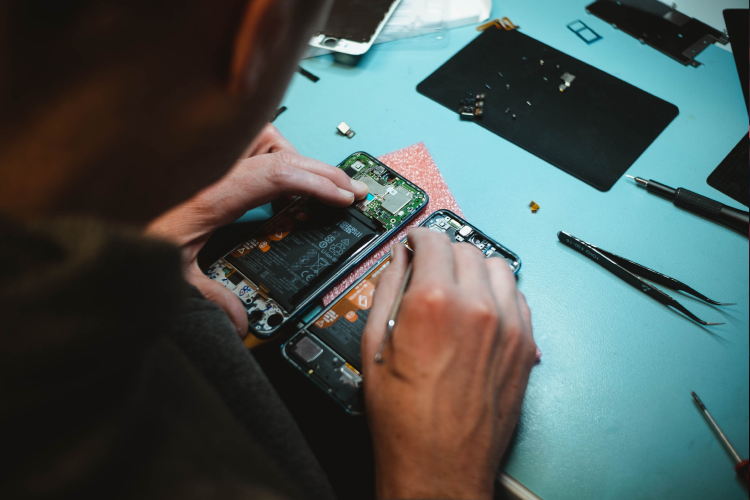How do you recycle your computer equipment?

Benefit from effective IT support
Discover our all-in-one solution
We are used to Recycle our waste on a daily basis. Cardboard, plastic, metal, we know just about where each material should be discarded. But when it comes to our old computer tools, the question is getting complicated. Where should you bring your computer equipment to recycle it? Can we really give it a new life?
PWhy should you recycle your computer equipment?
It is observed all over the world, The consumption of digital objects is increasing every year. On average, in France, each person has 8 computer devices, ranging from a smartwatch to a laptop, including a mobile phone and a Bluetooth speaker.
Every year around the world, more than 60 million tons of electronic waste (WEEE) are manufactured. Also called D3E, this waste concerns the categories of electrical and electronic equipment, which includes The household appliance and everything that is digital.
These numbers are not trivial. That is why since the January 1, 2018, the sorting and recycling of computer equipment are mandatory for businesses with more than 20 employees. For a company, the recycling of computer equipment does not have the same scope or the same challenges as for individuals.
So how do we do it? Who is taking over their old computer park ? rzilient explains everything in this article and gives you 4 alternatives to recycling.

Who collects computer waste for recycling from businesses?
In recent years, pollution linked to the digital sector has exploded. Between Extraction Of feedstocks which requires numerous resources (water, energy) or the energy supply for all our devices and data centers, The carbon footprint of digital technology is significant.
So what do we do with our old computer tools to prevent them from ending up in the trash? Who takes over the computers?
If you are a business, the recycling needs are somewhat different individuals but there are numerous solutions to give a second life to your equipment.
1. Have old equipment removed directly from your business
To do this, he is It is important to call on a recycling professional who will come directly to the site to collect your various D3Es. Depending on the professional chosen, there are sometimes weight limits that should not be exceeded. At Rzilient we work in partnership with Save Market and Zack, specialized in the recovery and recycling of computer equipment.
Before the recycling professional comes to get rid of your old equipment, it is necessary to specify to him what actions he should or should not perform:
- Destruction of data on hard drives;
- serial number statement.
2. Bring your WEEE to a collection point
When the IT fleet to be recycled and renewed is large, this option can be difficult to implement. Nevertheless, There are numerous collection points in France.
On the other hand, you must pay attention to the weight of the D3Es you want to donate. If you have More or less 2 tons of old computer hardware To be processed, the proposed collection points will not be the same.
These two options have their pros and cons but we must not forget that the treatment of electronic waste is mandatory. Penalties can be severe in case of non-compliance.
There are real ecological challenges behind the treatment and recycling of this waste when you are a company because The volumes are not the same only for individuals. They are much more substantial, as is the frequency with which you have to take care of your equipment, which for some people quickly becomes obsolete.

The 4 main steps to recycle your computer equipment
But what happens once your computer hardware is collected?
You should know that all electronic components are, in theory, recyclable :
- processor;
- hard drives;
- computer screens;
- printers;
- laptops;
- motherboards;
- keyboards...
Here are the 4 major steps that your old digital equipment will follow when you recycle it.
1. Upstream sorting
Before calling a professional to come and pick up your computer equipment, it is important that you were doing an initial sorting within your company. Remove polluting things that cannot be recycled with D3Es: batteries, cartridges, unwanted cables...
2. The collection
The 2nd step is collecting! That's when the recycling professional comes to take your IT fleet. Once recovered, He takes a look at which devices are still functional and will simply need a repair to get back on the circuit, and the others. These are They who will end up in a sorting center in a specialized sector. The components will be dismantled, tested, some remelted to be reused in new devices.
3. The treatment
This is where the work of recycling channels really begins. The first step is to dismantle equipment to see which parts are reusable and which materials are recyclable.
Metals and components that are still in good condition are sorted according to precise classification standards and then sent to recycling companies. This is the case of plastic that can be found in cables or copper. They are resold to specialized channels, and for some, remelted.
What's left is depolluted, that is to say thatWe remove the dangerous components. They are the ones who are the problem when recycling is not done according to the rules. When they end up in landfills buried underground, these components pollute the soil surrounding environment and nearby water causing serious biodiversity and health problems.
When treating electronic waste, there are 3 options for recycling different materials:
- recycling for the creation of new materials and reintroduction into the circuit;
- energy recovery or material valorization;
- the disposal of materials eby complying with regulations.
4. Reintroduction into the circuit
The primary objective of recycling is to reuse the various extracted materials Like secondary raw materials. This makes it possible to put on the market equipment manufactured with existing resources.
But some things cannot be recycled or reintroduced, like batteries or hard drives. The latter are Grinded to destroy confidential data and what is left of it (about 17%) is treated by incineration or by storage centers.
Limits to the recycling of computer products
We are well aware of it, Not everything is recyclable. This is all the more obvious when it comes to computer equipment because the components are sometimes So small, or stuck, that it is impossible to extract them individually to make secondary raw materials.
Between the poor sorting at the top of the chain, and the constraints that make certain components difficult to recycle, it is estimated that only 65% of D3E is actually recycled well.
Here are a few numbers:
- 17% of the world's WEEE is collected for recycling. And what is not recycled is incinerated, buried or passed through illegal channels (Global e-Waste Monitor 2020)
- Properly collected electronic waste can be recycled. But among this collection, only a small part of the material can be separated and recycled. It is estimated that less than 20% of a smartphone is recyclable. (The economy and society in the digital age)
- Many materials decycle, i.e. they lose quality with each cycle, and after being “cycled” a few times, they become non-recyclable.

4 more effective alternatives to recycling
Currently, we are becoming more and more aware that recycling is no longer THE ultimate solution to act against climate change. There are numerous alternatives that make it possible to reduce your carbon footprint, especially at the digital level.
1. Reconditioned computer equipment
If refurbished equipment is becoming more and more popular, especially in business, it is because the advantages of choosing it are numerous. You have theThe guarantee of a functional computer device and whose ecological footprint is much smaller. This is the most effective option if you are looking to significantly reduce your footprint.
2. Rent your computer park
Another solution proposed by Rzilient and that we don't always think about is the rental of its IT fleet. This option is perfect when you do not want to worry about the end of the life of your devices and you need support in your IT support.
Whether for 6 months, 1 year or 2 years, you have The possibility of changing equipment computer during the contract and even to buy it at the end if you can't imagine leaving it.
3. Extend the life of your tools
Instead of throwing away a computer device as soon as it is a little slower than before, it is essential to try to see if it is repairable. Because extending the life of your equipment is an effective way to reduce your carbon footprint.
Since January 1, 2021, measures have been taken to: encourage repair before throwing away. Today, when you buy a new product, it is mandatory to mention its repairability index.
What exactly is the repairability index? It is simply A score out of 10 which shows how easy the tool is to repair, or not. To do this, we rely on:
- demountability of the product;
- the availability of advice use and maintenance;
- the availability and the price of the parts.
4. Be part of a circular economy approach
For some people's waste to be used for others, The circular economy is the most interesting solution to adopt. True alternative model, this diagram allows reduce the impact on the environment at all levels since it is a system of exchange between different partners.
It is on this model that is based Rzilient with its partners to create a circular and committed digital system. Thanks to these collaborations, the challenge is to eliminate the waste emitted by this sector in the long term.
Electronic waste and old computer equipment raise concerns numerous challenges in relation to climate change. Faced with the ever-increasing number of our use of IT tools, it is important to realize that recycling is not always the ideal solution to reduce our digital carbon footprint.
Of daily actions can also be done with digital sobriety or corporate digital responsibility.
Do you want to reduce your company's environmental footprint and adopt a more responsible IT policy? Let's discuss your project together.






